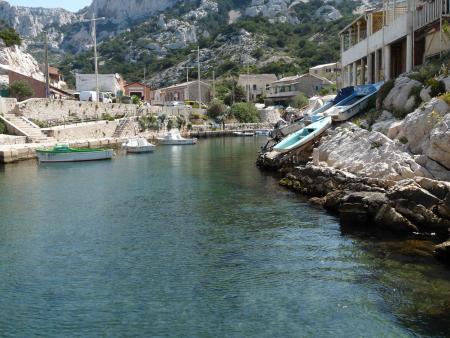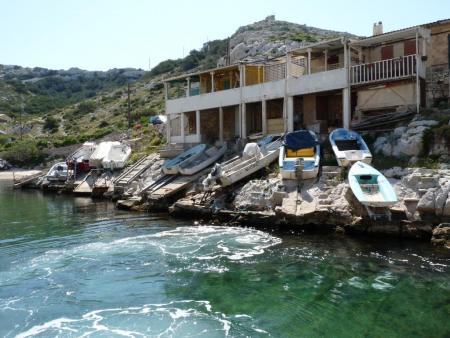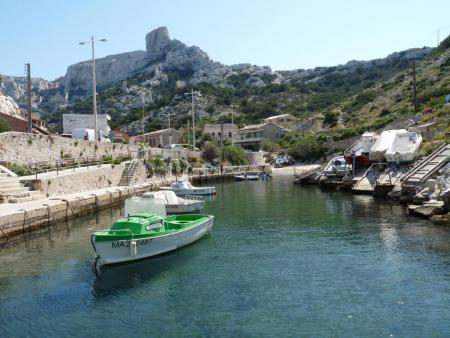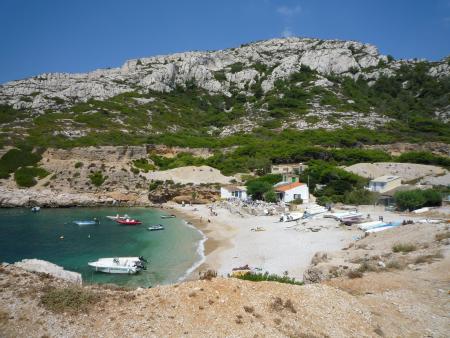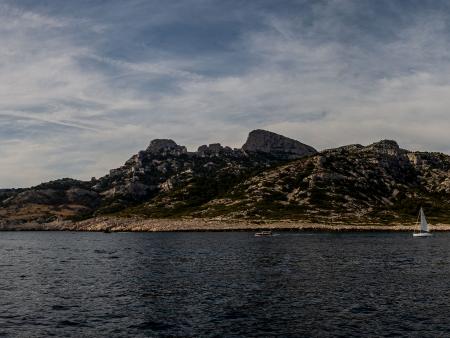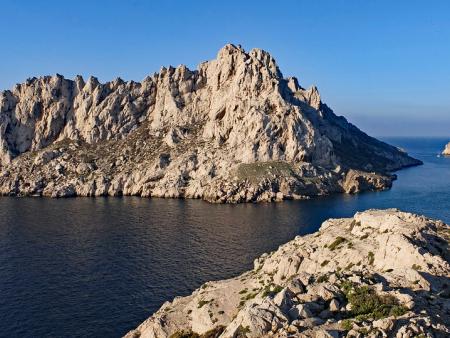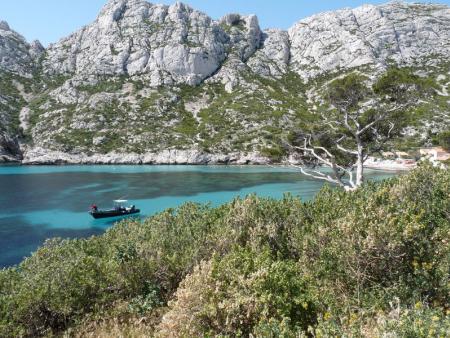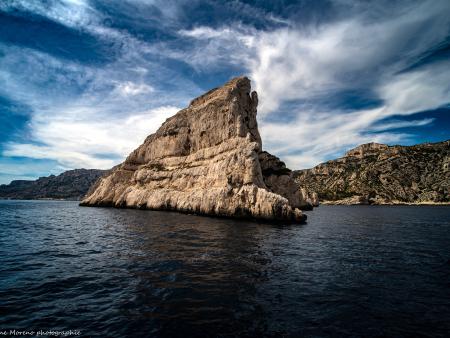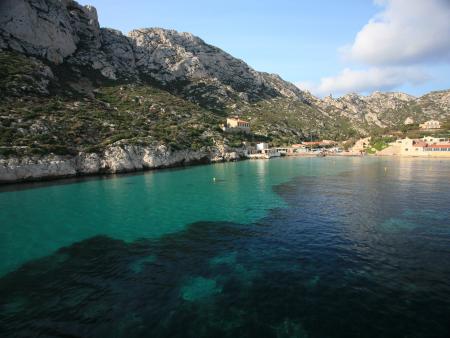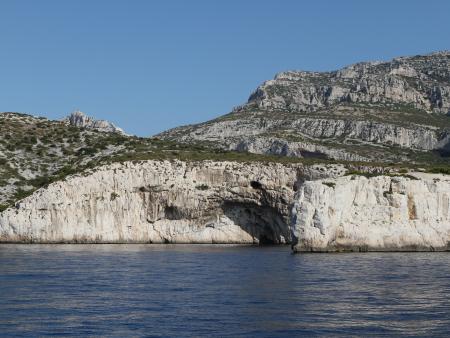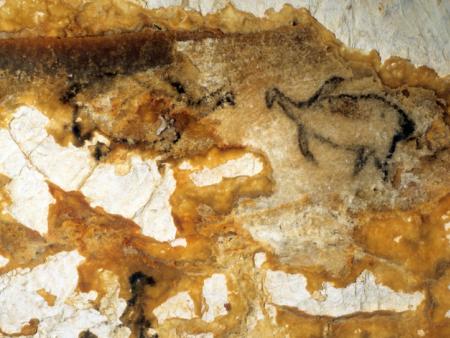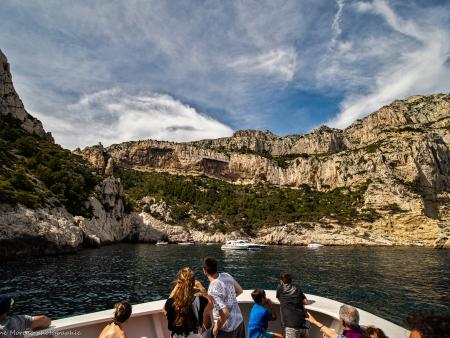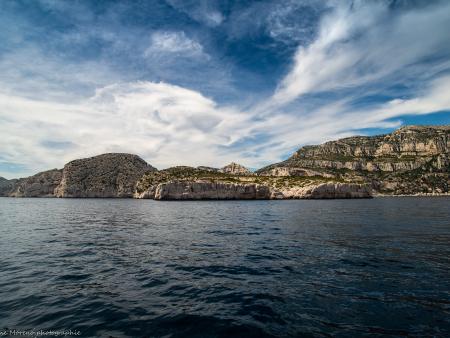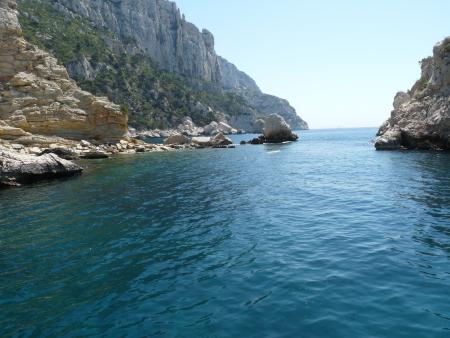As soon as the sun shows up, the calanque of Marseilleveyre becomes one of the favorite trips of local from Marseille.
In addition to its beautiful scenery and its exceptional flora, Marseilleveyre shelters something unique in Marseille: "Chez le Belge", a very typical and local restaurant which has become an institution among hikers in the creeks!
Marseilleveyre and the Mounine... To discover by the sea
Marseilleveyre combines two advantages: it is close to the city center and at the same time, is accessible only by boat or on foot, in about 45 minutes.
The cove, also popular for its wildness and the beauty of its landscape is visited only by motivated hikers ! Along the coastline running from Callelongue Marseilleveyre, another tiny cove marks out the hiking trail: the Mounine.
His name is simply derived from the nickname that was formerly attributed to the female sex in Provencal slang.
View from our cruises to Marseilleveyre
The magic nature and flora of Marseilleveyre
The unique flora Marseilleveyre Nature has endowed the massive Marseilleveyre a very specific flora, which is the shelter of endemic species. The "leopard skin" that covers the massive Marseilleveyre is a name that describes the scrubland growing bushy and scattered on the rock.
This is an ecosystem with its own peculiarity. It includes, among other plant species, heather, sarsaparilla, Aleppo pine or juniper cade, the centipede fern or even the very local Gouffé grass. A forest of oaks completes the panorama.
The creek Marseilleveyre and the Mounine offer proximity to Maïre and Tiboulen Islands.
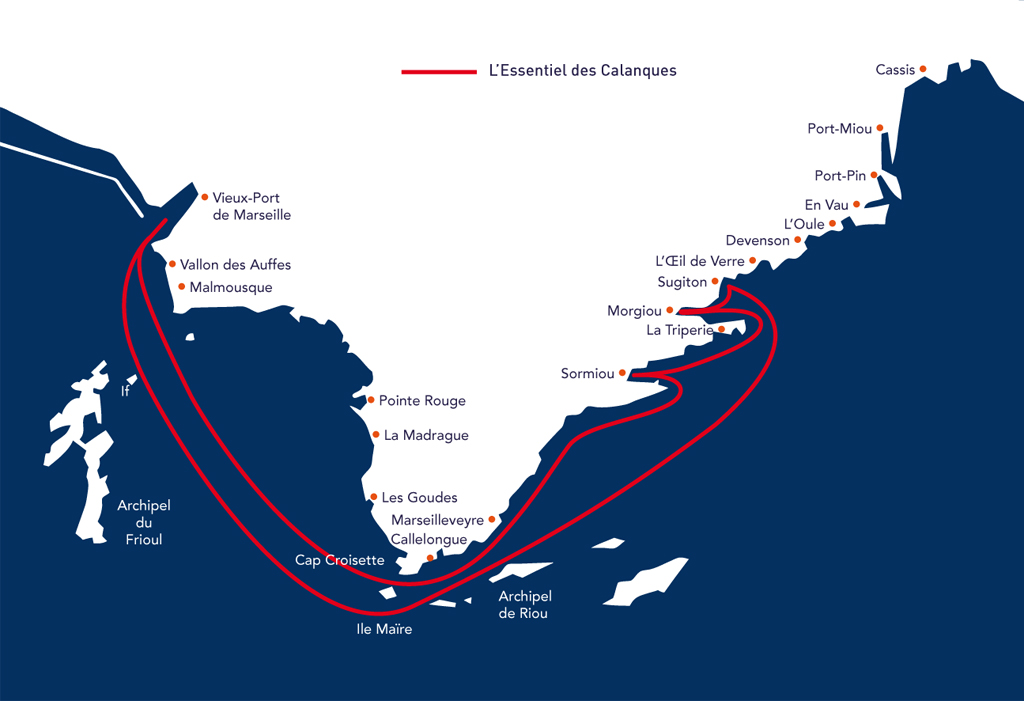




 04.91.58.50.58
04.91.58.50.58